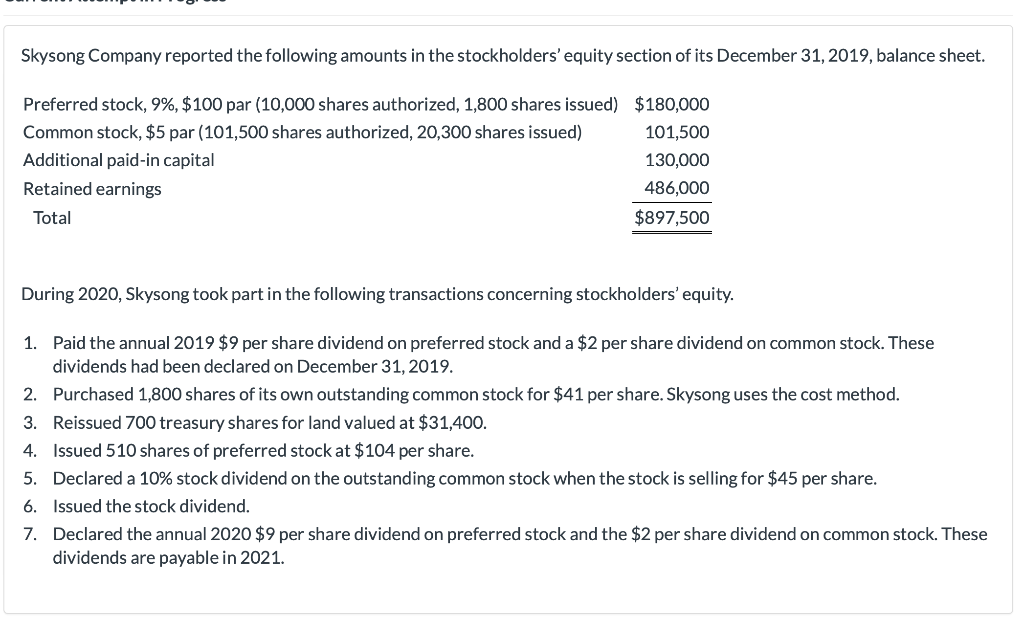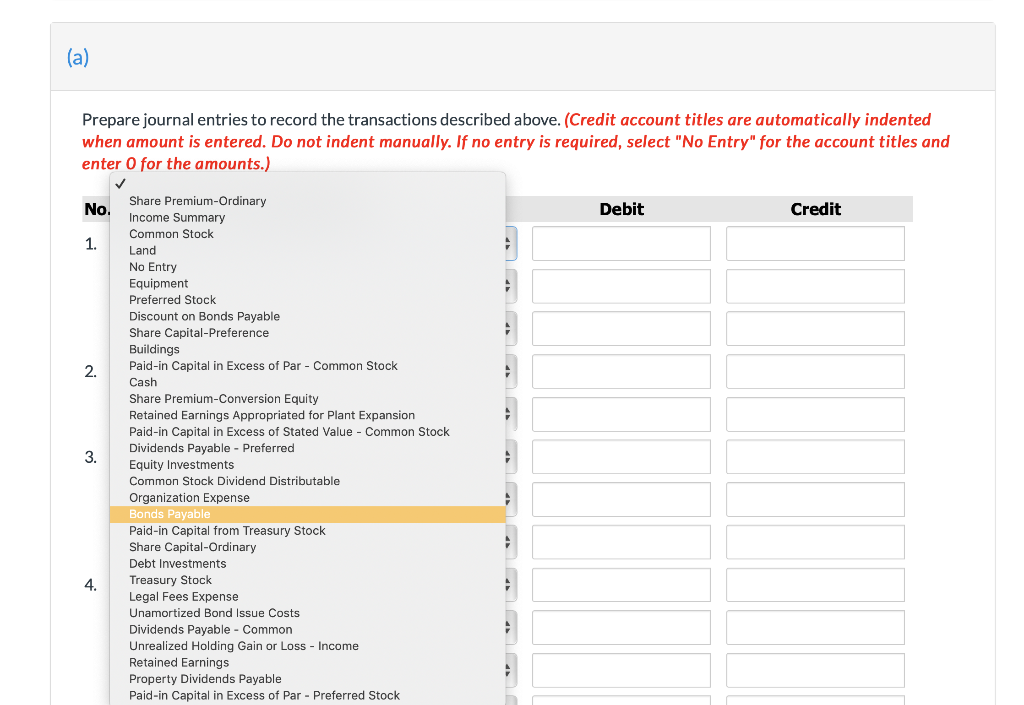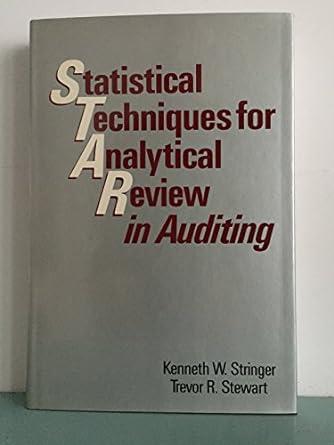

Skysong Company reported the following amounts in the stockholders' equity section of its December 31, 2019, balance sheet. Preferred stock, 9%, $100 par (10,000 shares authorized, 1,800 shares issued) $180,000 Common stock, $5 par (101,500 shares authorized, 20,300 shares issued) 101,500 Additional paid-in capital 130,000 Retained earnings 486,000 $897,500 Total During 2020, Skysong took part in the following transactions concerning stockholders' equity. Paid the annual 2019 $9 per share dividend on preferred stock and a $2 per share dividend on common stock. These dividends had been declared on December 31, 2019. 1. Purchased 1,800 shares of its own outstanding common stock for $41 per share. Skysong uses the cost method. 2. Reissued 700 treasury shares for land valued at $31,400. 3. Issued 510 shares of preferred stock at $104 per share. 4. 5. Declared a 10% stock dividend on the outstanding common stock when the stock is selling for $45 per share. 6. Issued the stock dividend. 7. Declared the annual 2020 $9 per share dividend on preferred stock and the $2 per share dividend on common stock. These dividends are payable in 2021. (a) Prepare journal entries to record the transactions described above. (Credit account titles are automatically indented when amount is entered. Do not indent manually. enter 0 for the amounts.) no entry is required, select "No Entry" for the account titles and Share Premium-Ordinary Debit Credit No. Income Summary Common Stock 1. Land No Entry Equipment Preferred Stock Discount on Bonds Payable Share Capital-Preference Buildings Paid-in Capital in Excess of Par - Common Stock 2. Cash Share Premium-Conversion Equity Retained Earnings Appropriated for Plant Expansion Paid-in Capital in Excess of Stated Value - Common Stock Dividends Payable - Preferred Equity Investments 3. Common Stock Dividend Distributable Expense Organization Bonds Payable Paid-in Capital from Treasury Stock Share Capital-Ordinary Debt Investments Treasury Stock Legal Fees Expense 4. Unamortized Bond Issue Costs Dividends Payable - Common Unrealized Holding Gain or Loss - Income Retained Earnings Property Dividends Payable Paid-in Capital in Excess of Par - Preferred Stock








